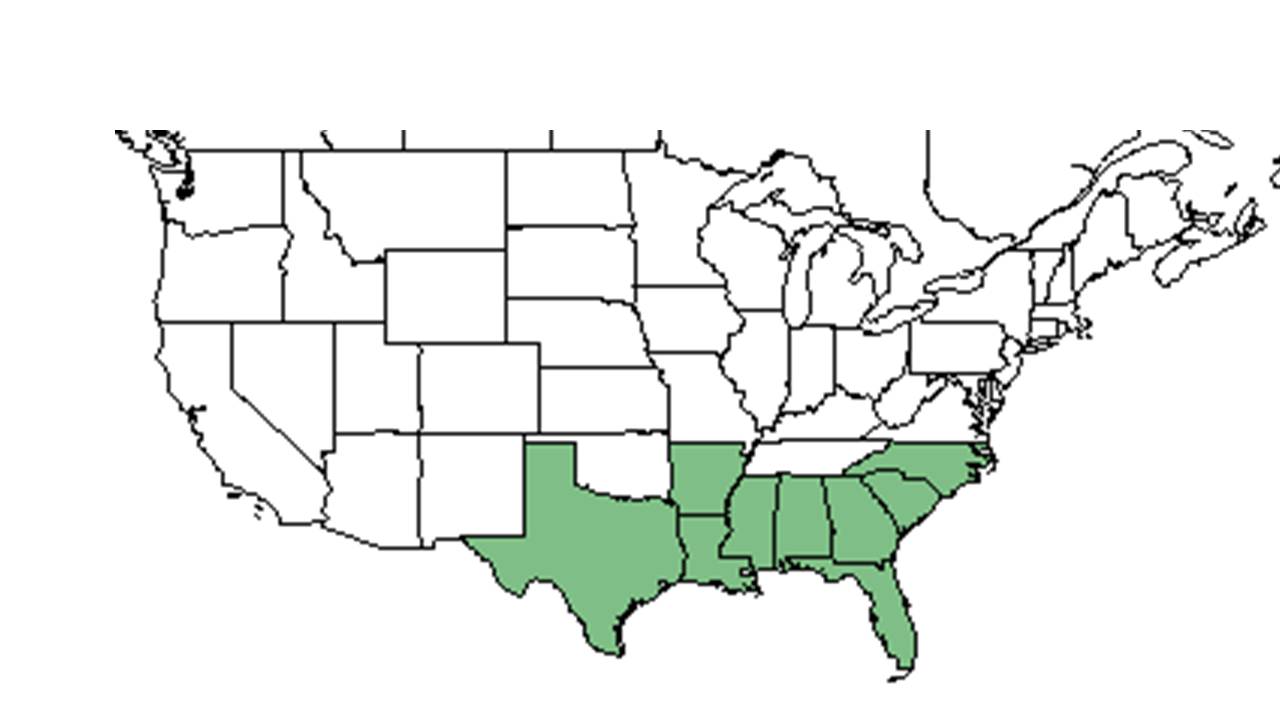Difference between revisions of "Rhynchospora plumosa"
KatieMccoy (talk | contribs) |
KatieMccoy (talk | contribs) |
||
| Line 28: | Line 28: | ||
''R. plumose'' was found in non-disturbed longleaf pine sites in the North Carolina; in contrast, the species was not found in highly disturbed sites (Cohen et al. 2004). | ''R. plumose'' was found in non-disturbed longleaf pine sites in the North Carolina; in contrast, the species was not found in highly disturbed sites (Cohen et al. 2004). | ||
===Habitat=== <!--Natural communities, human disturbed habitats, topography, hydrology, soils, light, fire regime requirements for removal of competition, etc.--> | ===Habitat=== <!--Natural communities, human disturbed habitats, topography, hydrology, soils, light, fire regime requirements for removal of competition, etc.--> | ||
| − | In the Coastal Plain in Florida, ''R. plumosa'' can occur in savannas, open scrub oak savannas, wiregrass savannas, pine-palmetto scrub oaks, seasonally wet depressions in open pinewoods, pine flatwoods, regularly burned pine flatwoods, slash pine-wiregrass flatwoods, exposed sandy bottoms of lakes, seepages slopes, hillside bogs, grass-sedge bogs, shrubby borders of depression marshes, sand ridges, mangrove swamps, dry pine barrens, and drying ephemeral ponds (FSU Herbarium). It can also be found in power line corridors, sandy roadsides, wet borrow pits, shrub bog clearings, pine flatwood clearings, moist roadside depressions, cut-over pinewoods, cleared palmetto scrubs, bull-dozed scrublands, | + | In the Coastal Plain in Florida, ''R. plumosa'' can occur in savannas, open scrub oak savannas, wiregrass savannas, pine-palmetto scrub oaks, seasonally wet depressions in open pinewoods, pine flatwoods, regularly burned pine flatwoods, slash pine-wiregrass flatwoods, exposed sandy bottoms of lakes, seepages slopes, hillside bogs, grass-sedge bogs, shrubby borders of depression marshes, sand ridges, mangrove swamps, dry pine barrens, and drying ephemeral ponds (FSU Herbarium). It can also be found in power line corridors, sandy roadsides, wet borrow pits, shrub bog clearings, pine flatwood clearings, moist roadside depressions, cut-over pinewoods, cleared palmetto scrubs, bull-dozed scrublands, boat ramps, pine plantations, and clobbered pine-wiregrass flatwoods. Soils include dry sand, moist sandy peat, loamy sand, sandy loam, and white sand (FSU Herbarium). |
| + | |||
| + | Associated species include ''Aristida stricta, Pinus palustris, Serenoa repens, Hypericum, Stillingia, Xyris, Rhexia mariana, Dichanthelium wrightianum, Scleria georgiana, Sarracenia flava, Drosera, Sarracenia, Rhynchospora elliottii, R. corniculata, R. chapmannii, R. pusilla, R. fascicularis, R. baldwinii, R. globularis, R. wrightiana, R. fernaldii, and R. ciliaris'' (FSU Herbarium). | ||
===Phenology=== <!--Timing off flowering, fruiting, seed dispersal, and environmental triggers. Cite PanFlora website if appropriate: http://www.gilnelson.com/PanFlora/ --> | ===Phenology=== <!--Timing off flowering, fruiting, seed dispersal, and environmental triggers. Cite PanFlora website if appropriate: http://www.gilnelson.com/PanFlora/ --> | ||
Revision as of 17:00, 6 October 2015
| Rhynchospora plumosa | |
|---|---|

| |
| Scientific classification | |
| Kingdom: | Plantae |
| Division: | Magnoliophyta – Flowering plants |
| Class: | Liliopsida – Monocotyledons |
| Order: | Cyperales |
| Family: | Cyperaceae |
| Genus: | Rhynchospora |
| Species: | R. plumosa |
| Binomial name | |
| Rhynchospora plumosa Elliott | |

| |
| Natural range of Rhynchospora plumosa from USDA NRCS Plants Database. | |
Common name: plumed beaksedge
Contents
Taxonomic notes
Description
A description of Rhynchospora plumosa is provided in The Flora of North America.
Distribution
Ecology
R. plumose was found in non-disturbed longleaf pine sites in the North Carolina; in contrast, the species was not found in highly disturbed sites (Cohen et al. 2004).
Habitat
In the Coastal Plain in Florida, R. plumosa can occur in savannas, open scrub oak savannas, wiregrass savannas, pine-palmetto scrub oaks, seasonally wet depressions in open pinewoods, pine flatwoods, regularly burned pine flatwoods, slash pine-wiregrass flatwoods, exposed sandy bottoms of lakes, seepages slopes, hillside bogs, grass-sedge bogs, shrubby borders of depression marshes, sand ridges, mangrove swamps, dry pine barrens, and drying ephemeral ponds (FSU Herbarium). It can also be found in power line corridors, sandy roadsides, wet borrow pits, shrub bog clearings, pine flatwood clearings, moist roadside depressions, cut-over pinewoods, cleared palmetto scrubs, bull-dozed scrublands, boat ramps, pine plantations, and clobbered pine-wiregrass flatwoods. Soils include dry sand, moist sandy peat, loamy sand, sandy loam, and white sand (FSU Herbarium).
Associated species include Aristida stricta, Pinus palustris, Serenoa repens, Hypericum, Stillingia, Xyris, Rhexia mariana, Dichanthelium wrightianum, Scleria georgiana, Sarracenia flava, Drosera, Sarracenia, Rhynchospora elliottii, R. corniculata, R. chapmannii, R. pusilla, R. fascicularis, R. baldwinii, R. globularis, R. wrightiana, R. fernaldii, and R. ciliaris (FSU Herbarium).
Phenology
Seed dispersal
Seed bank and germination
Fire ecology
R. plumose benefits from high fire frequencies and is common in the second winter after fire in longleaf pine forest ecosystems in the southeastern United States (Glitzenstein et al. 2003, DiMiceli et al. 2007).
Pollination
Use by animals
The Henslow’s Sparrow (Ammodramus henslowii) does not prefer to eat the seeds (DiMiceli et al. 2007).
Diseases and parasites
Conservation and Management
Cultivation and restoration
Photo Gallery
References and notes
- Cohen, S., R. Braham and F. Sanchez. 2004. Seed bank viability in disturbed longleaf pine sites. Restoration Ecology 12:503-515.
- Glitzenstein, J. S., D. R. Streng and D. D. Wade. 2003. Fire frequency effects on longleaf pine (Pinus palustris, P.Miller) vegetation in South Carolina and northeast Florida, USA. Natural Areas Journal 23:22-37.
- DiMiceli, J. K., P. C. Stouffer, E. I. Johnson, C. Leonardi and E. B. Moser. 2007. Seed preferences of wintering Henslow's sparrows. Condor 109:595-604.